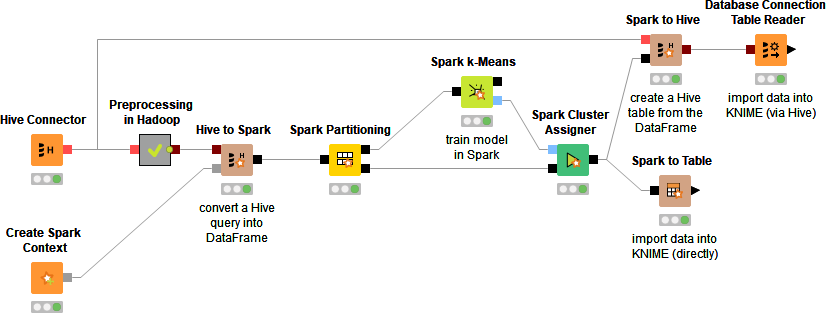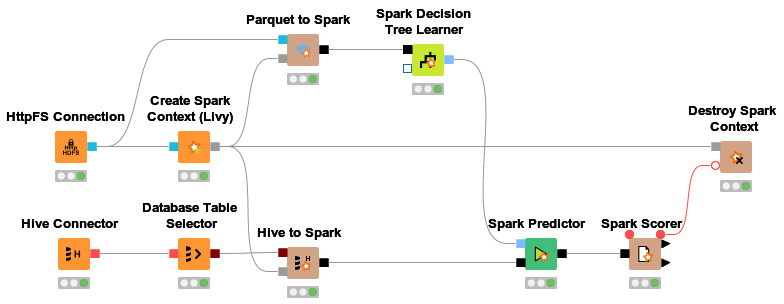KNIME 2.6.3 FREE DOWNLOAD
There is an annoying issue with the Windows built-in archive tool: With that knowledge, KNIME-CDK can be used for chemical data exploration in synergy with other cheminformatics plug-ins to make proper use of the framework environment. The routine work of a cheminformatician involves the processing of libraries of small molecules. This highlights one of the benefits of employing more than one library for processing and analysis tasks. Please review our privacy policy. SB wrote the manuscript. By default the element symbol is drawn. 
| Uploader: | Dubar |
| Date Added: | 13 September 2007 |
| File Size: | 16.28 Mb |
| Operating Systems: | Windows NT/2000/XP/2003/2003/7/8/10 MacOS 10/X |
| Downloads: | 13100 |
| Price: | Free* [*Free Regsitration Required] |
Over the last year, the plug-in and its underlying core library have been updated, reducing memory requirements and improving overall 2.6.33. All authors read and approved the final manuscript. In order to run KNIME after your download is complete, extract the archive and start the executable file under Windows 'knime.
J Chem Inf Model. CS designed the core library and provides continuous support. They deal with all community requests and ensure full functionality of the plug-in.
KNIME GC overhead exceeded - KNIME Analytics Platform - KNIME Community Forum
With that knowledge, KNIME-CDK can be used for chemical data exploration in synergy with other cheminformatics plug-ins to make proper use of the framework environment. Even simple tasks like the visual characterisation of a chemical library [ 4 ] requires importing and exporting data in various formats using different tools.
Any other archive tool should work fine. This guarantees consistency across all nodes and simplifies usability of the plug-in by hiding technical details from the user, hence allowing the scientist to focus on the task at hand. The knimd work 2.6.3 a cheminformatician involves the processing of libraries of small molecules.
main features of the visone software
Issues that will be addressed are the overall speed and input capability of the plug-in to make it more usable and better suited for high-throughput analysis. OPSIN, an open source solution. Full Eclipse SDK 3.

Author information Article notes Copyright and License information Disclaimer. Simultaneously, MACCS fingerprints and atom signatures are calculated for the atom-filtered molecules upper path. From the 23, structures, 22, structures For comparison, the well-established RDKit plug-in was used.
A workflow-based cheminformatics tool provides the advantage of ease-of-use and interoperability between complementary cheminformatics packages within the same framework, hence facilitating the analysis process. Setting the required file paths will speed up workflow creation and node configuration. A typical variant calling workflow that covers all steps from initial quality control and read mapping up to variant filtration as well as a workflow for differential expression detection.
Among other things, that includes the standardization of molecules, calculation of various descriptors, visualisation of molecular structures, and downstream analysis. After inserting a new node into the workflow or when using an imported workflowthe nodes show warnings concerning missing binaries although all paths are set by using the preference page. Cheminformaticians have to routinely process and analyse libraries of small molecules.

The ChEBI reference database and ontology for biologically relevant chemistry: Representation of chemical structures. Test Workflows For testing the node functionalities, we provide two example workflows.
KNIME-CDK: Workflow-driven cheminformatics
An open chemical toolbox. The underlying CDK molecules are handled and stored within data cells in standardized form, i. We describe the design and integration of the plug-in, and demonstrate the usage of the nodes on ChEBI, a library of small molecules of biological interest. Currently the following groups lack support examples in brackets: A node can be considered as single worker carrying out a single function.
Example workflows for these tasks can be found in the repository [ 17 ] of the myExperiment virtual research environment [ 18 ]. On the other hand, standalone tools suffer from their limited scope. Abstract Background Cheminformaticians have to routinely process and analyse libraries of small molecules. Workflow environments circumvent the above mentioned challenges to various degrees by providing a common platform for different tools and have become increasingly popular with the scientific community [ 56 ].

Comments
Post a Comment